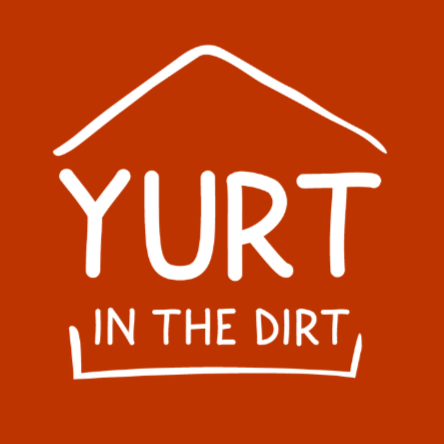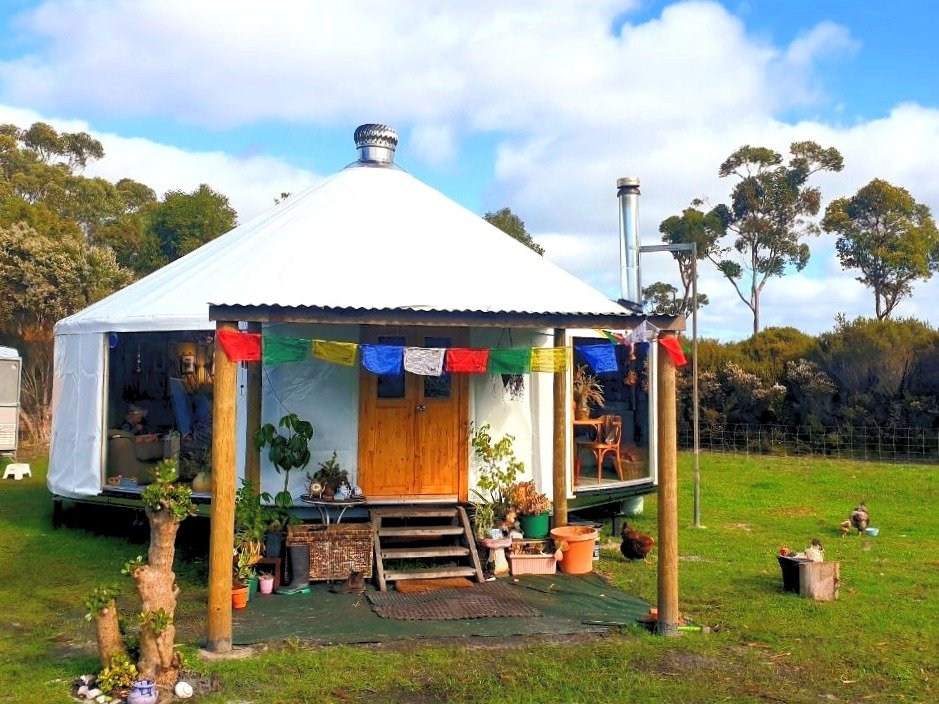Yurts are more than just tents; they are a testament to nomadic ingenuity. Originating from the steppes of Central Asia, these circular dwellings have housed Mongolian families for thousands of years. Traditionally constructed from wood and felt, yurts are designed to be both portable and sturdy. Today, they capture the imagination of eco-conscious adventurers worldwide, from the bushlands of Australia to the forests of North America.
This article explores the evolution of yurt materials, from the traditional woods and wools to modern synthetics and metals. We’ll uncover how these materials combine to withstand extreme climates and adapt to diverse environments. Join us as we delve into the past and present of yurt construction, revealing how this ancient home remains relevant in our modern world.
Materials Used in Different Types of Yurts
| Type of Yurt | Framework | Covering | Insulation | Additional Features |
|---|---|---|---|---|
| Traditional Rural Yurts | Wood (willow, birch, poplar, bamboo) | Felt (sheep, goat, yak wool) | Multiple layers of felt | Animal hides, canvas for waterproofing |
| Modern Permanent Yurts | Metal frames, aircraft cables | Synthetic materials | Advanced polymers, eco-friendly batts | Enhanced structural components for durability |
| Urban Yurt Quarters | Traditional wood or modern materials for semi-permanence | Felt, occasionally reinforced with modern materials | Traditional felt, sometimes supplemented with modern insulation | Wooden or reinforced doors for improved security |
| International Yurts (North America, Europe) | Native hardwoods (ash, chestnut) or metal structures | Synthetic weather-resistant fabrics | Modern insulation materials | Customizable features for local climate adaptations |
Traditional Materials and Construction
Framework
The backbone of any yurt is its lattice structure, known as khana. Made from lightweight, flexible woods such as willow, birch, poplar, or bamboo, these crisscrossed poles provide both strength and portability. This ingenious design allows the yurt to be easily assembled and disassembled, adapting seamlessly to the nomadic lifestyle.
Roof and Crown (Toono)
Atop the lattice stands the yurt’s roof, anchored by the toono, or central crown. This crucial component, often passed down through generations, serves as both a structural and a cultural keystone. From it, the roof poles, or uni, extend outward, creating the yurt’s distinctive dome shape. The design not only supports the structure but also facilitates smoke escape and air circulation.
Coverings
The primary covering of traditional yurts is felt, produced from the wool of sheep, goats, or yaks. This felt is crafted using age-old processes unique to the Central Asian steppes, where the wool is compressed into thick, insulating layers. To further protect against the elements, animal hides and modern materials like canvas are often added. These layers enhance the yurt’s weather resistance and insulation capabilities.
Insulation and Weatherproofing
A typical yurt features three to five layers of felt, providing substantial insulation against the extreme temperatures of the steppe. This multi-layered approach not only keeps the interior warm during freezing winters but also cool during the scorching summers. The layering technique, combined with the natural materials used, ensures that the yurt remains a comfortable, durable home in diverse conditions.
Modern Adaptations
Materials
Modern yurts have embraced synthetic materials to boost durability and resist adverse weather conditions. These advancements enable yurts to withstand more severe climates and extend their usability, making them ideal for diverse environments from coastal regions in Australia to snowy landscapes abroad.
Structural Innovations
The structural integrity of yurts has seen significant improvements with the incorporation of metal frames and aircraft cables. These materials provide a robust foundation, allowing yurts to transition from temporary shelters to semi-permanent or permanent homes. This adaptation not only enhances safety but also expands the practical applications of yurts in fixed settings.
Energy Efficiency
Modern yurts are increasingly focusing on energy efficiency. Innovations in insulation materials have greatly improved the thermal performance of these dwellings. More effective insulation options, such as advanced polymers and eco-friendly batts, help maintain comfortable temperatures year-round, reducing the need for excessive heating or cooling.
Yurts in Varied Climates and Cultures
Geographic Suitability
The traditional design of yurts is perfectly suited to the extreme conditions of the Central Asian steppes. Their circular shape provides exceptional wind resistance, crucial in an environment with few natural windbreaks. Additionally, the ability to add or remove insulation layers allows for effective thermal management, keeping the interior warm in freezing temperatures and cool during hot spells.
Urban vs. Rural Use
In rural Central Asia, yurts continue to serve as practical, movable homes for nomadic herders. Contrastingly, in urban settings like Ulaanbaatar, yurts have adapted to less transient lifestyles. Here, they often form yurt quarters, where they are set up more permanently, reflecting the city’s growing population and the residents’ need for affordable housing. This urban adaptation shows the yurt’s versatility in accommodating both traditional nomadic practices and modern fixed-residence requirements.
International Spread
Yurt culture has also taken root far from its Central Asian origins, spreading to North America and Europe. In these regions, yurts are often used in eco-tourism and as alternative living spaces that emphasise sustainability. The adaptability of yurts to various climates and settings has been key to their international appeal, allowing them to be customised for everything from summer camps to retreat centres in colder climates.
The Cultural Significance of Yurts Today
Symbolism and Identity
Yurts are more than just shelters; they are potent symbols of Central Asian cultural identity. This deep connection is reflected in national symbols, such as the flags of Kyrgyzstan and the coat of arms of Kazakhstan, both of which incorporate the yurt’s crown pattern. These designs celebrate the yurt’s historical significance and its role in shaping the cultural narratives of these nations.
Contemporary Challenges
However, the traditional yurt faces modern challenges. Urban migration, particularly evident in Ulaanbaatar, has transformed how yurts are used. Once suited to nomadic lifestyles, many yurts now form semi-permanent clusters in the city’s outskirts, often lacking basic services, which contributes to significant environmental issues. The seasonal use of coal stoves in these areas also exacerbates air pollution, posing health risks and highlighting the need for sustainable urban planning.
Conclusion
Yurts exemplify versatility and resilience, adapting from ancient shelters on the vast steppes to modern dwellings in bustling cities. Today, the construction of yurts balances tradition with modernity, demonstrating their relevance in promoting sustainable living. As we continue to face global environmental challenges, the yurt stands as a beacon of sustainable practices, blending the wisdom of the past with innovations for the future.




